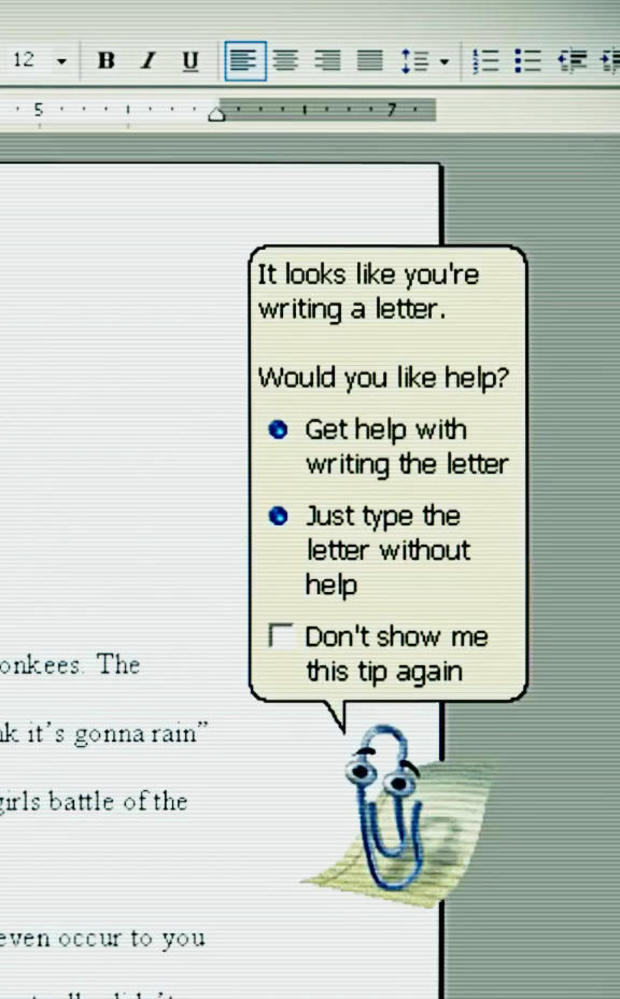Why does product design sometimes fail? It's complicated
Everywhere you look, things are getting more complicated. Our phones have over a thousand settings. Showerheads come with apps. Cars have touchscreens. Ovens have touchscreens. "There's no doubt that 'featuritis' is real," said design consultant Jakob Nielsen. "Most of these things are too complicated."
Nielsen says that part of the problem is bad design: "Simplicity is actually difficult to achieve. That takes a good amount of time, and talent, I should say, as well."
And part of the problem is us. As consumers, we tend to buy the gizmos with the most features. Nielsen said, "If I give you the choice between this toothbrush can do two things, and this one can do five things, you may think the five-feature toothbrush is a better toothbrush." And manufacturers, who believe consumers will pick the product with more features, have an incentive to keep piling them on.
But if you think today's products are hard to learn, try designing them.
Jon Friedman, who is Microsoft's chief of design, has redesigned all of the icons for all commands in all of Microsoft Office, which add up to tens of thousands. He says that, if a new version of Office were to streamline its commands, taking away those that didn't get much use, "some set of people would feel like we removed something very important for them. This is the conundrum we have to deal with: How do we take the power of what can be added to products as technology gets better, and make it really simple for people?"
Over the years, Microsoft has tried many times to strike that balance. When people complained that Microsoft Word was too complex, Microsoft offered a simpler, streamlined word processor called Write. It bombed. "It was one-size-fits-all," said Friedman. "And that's really hard. Simplicity can only come when it's truly adapted to each individual's definition of what is simple for them."
Then there was Clippy, the cartoon paper clip. "Clippy would proactively come forward in something like Word and say, 'It looks like you're trying to write a résumé,' and help you do something, like write a résumé," Friedman said. Clippy flopped, too.
Achieving simplicity is even harder when you're designing cars, because your customers are supposed to keep their eyes on the road.
"Everything is getting more complex," said Frank Weber, head of vehicle development for BMW, another company that has experimented with designs for simplicity. "You can imagine what it means in a vehicle environment, where you have to drive in addition to getting all kinds of information."
In the early 2000s, BMW introduced a turning/tilting/clicking knob for navigating menus, called iDrive. It was not a hit. "We were heavily criticized," said Weber, "because their experience was different [than what] they had with their other vehicles. You have to be very careful not to overwhelm people when you go from one generation to another generation."
But now, are you ready for some good news? These companies say that, thanks to new breakthrough technologies, they're on the verge of curing featuritis once and for all.
In BMW's 2025 cars, it will be via voice control, where drivers can use voice commands rather than navigate a menu on the dashboard. "Whether you ask for service, whether you want to change the interior color of your vehicle, if you want to go to a sport mode, typical things where you have to go deep into your menu structure, people will never do this again," said Weber.
The new cars can also show key information beneath the entire windshield, so you don't have to look down.
And unlike some car companies, BMW promises not to eliminate physical knobs for radio and climate.
The car's controls will in fact be divided up – some tasks requiring voice, some touchscreens, some physical buttons and knobs, depending upon which control is most suitable. Weber said, "Optimizing that setup is, I think, the art of controlling a vehicle."
Meanwhile, Microsoft says that it, too, is about to crack the complexity conundrum, according to chief marketing officer Yusuf Mehdi. "We're at the dawn of the next wave of computing," he said, "probably the most impactful thing you and I will ever get to see in our lifetimes."
The solution, said Mehdi, is artificial intelligence. "A lot of that complexity of files and menus and buttons, all that's gonna go away, because AI's gonna enable us to just ask for what we want," he said.
This feature, called Copilot, is a new app for smartphones and computers. Want to turn your PC to dark mode? Just ask it. Want to pull up emails to your mom? Just ask it.
Of course, not everyone will be happy. "People do not like change, that's for sure!" laughed Mehdi.
So, will voice control and AI help with the complexity problem? We'll soon find out. In the meantime, if you feel intimidated by complexity, design consultant Jakob Nielsen has two pieces of parting advice. First, no need to feel like a techno-loser: "It's not your fault; it's the designer's fault for making it complicated, 'cause it doesn't have to be complicated," he said.
And second: Buy simplicity. "Don't be seduced by this promise of a toothbrush that can do 20 things, when you only need it to do one thing. Go for simplicity," said Nielsen. "And then, your life will be happy."
For more info:
- Design consultant Jakob Nielsen (UX Tigers)
- "Behind the design: Meet Copilot" (Microsoft)
- BMW Group: Innovation
- "BMW reinvents itself: The BMW Vision Neue Klasse" (BMW)
Story produced by Jon Carras. Editor: Remington Korper.












